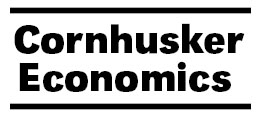Agricultural Economics, Department of

Cornhusker Economics
Date of this Version
7-20-2016
Document Type
Newsletter Issue
Citation
Cornhusker Economics, July 20, 2016, agecon.unl.edu/cornhuskereconomics
Abstract
Rising economic inequality in the United States and around the world is widely seen as an important public policy issue. While academic social scientists have long been interested in the causes and consequences of inequality, the economic situation in the aftermath of the Great Recession of 2008-09 has stimulated increased public awareness of this issue along with an outpouring of books and articles aimed at understanding it. Explanations for the current increase in the level of inequality draw attention to technological change, globalization, the declining influence of labor unions, and public policies among many other causes. In addition, many analysts point to changes in family structure as a contributing factor to the rise of economic inequality (e.g., Galbraith, 2016; Milanovic, 2016). The purpose of this article is to explore this aspect of the inequality problem in the United States.


Comments
Copyright 2016 University of Nebraska.